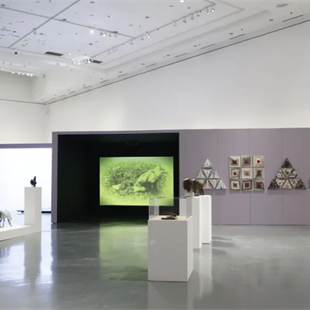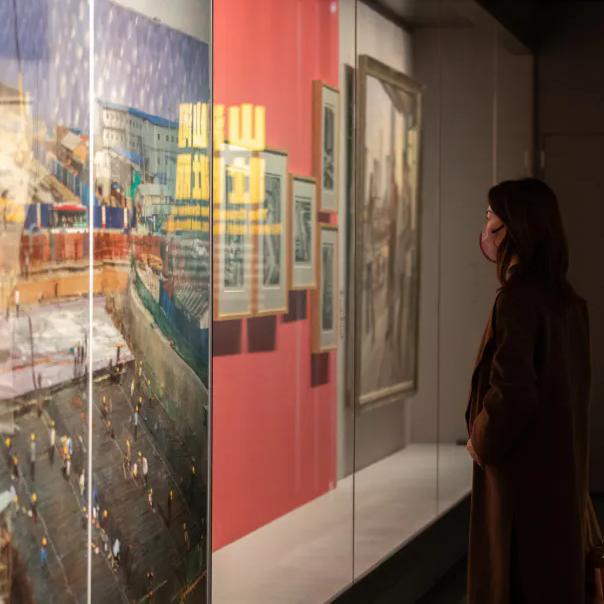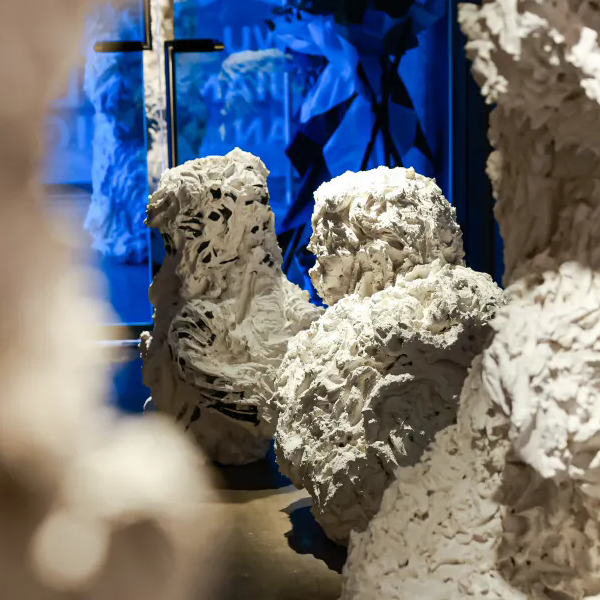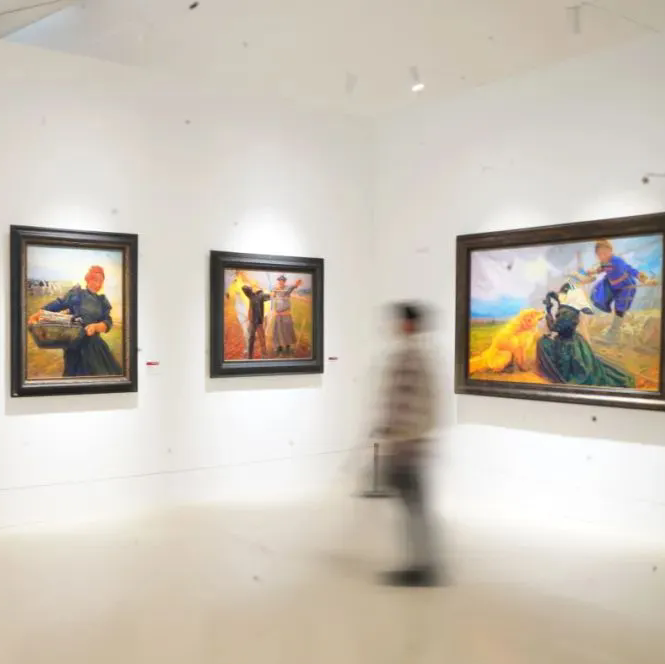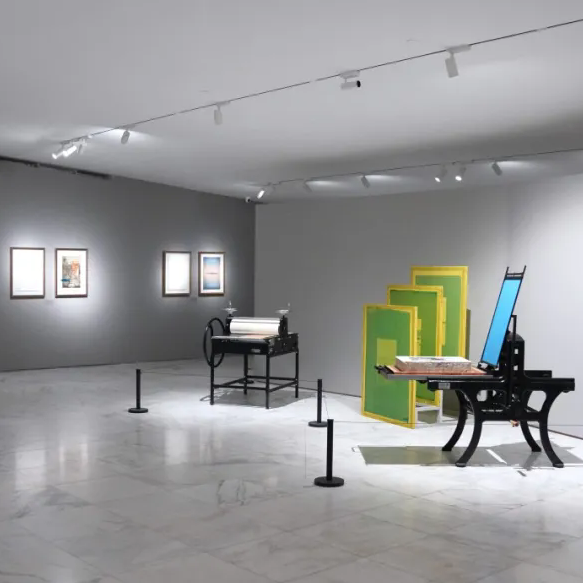
Hu Xianwu-Scattering Flowers, 2011; copperplate etching, 100×50cm×4
Chinese printmaking has always been regarded as the weapon created for the spread of ideas, as in various historical periods such as: the New Culture Movement, Sino-Japanese War, the founding of People’s Republic of China and even the Cultural Revolution. Chinese printmaking has played a vital role that other art forms cannot be substituted for. By the 1980s, the period of reform and the time of the opening up policy, with the transformation of Chinese society, printmaking became a trans-print art. On the one hand, it is due to the development of color printing along with the reforming and opening-up policy so it became popular in people’s daily life and prints took no advantage of publishing any longer; on the other hand, because of the complicated manufacturing process, printmaking gradually became an elegant language which was difficult to directly bear and there were pioneering concepts. As a result, printmaking skills were quickly marginalized. It seemed as if the printmaking artists had become alien artists. Just like being kept out of contemporary art, printmakers became silent in the increasingly active Chinese art circle.
Living in the silence of a noisy situation offered printmakers a valuable chance to look introspectively at themselves. A number of outstanding young printmakers began to seek representation and value that prints are worthy of in this new era. The young printmakers gradually shook off the traditional printmaking styles and stepped into the environment of contemporary art after learning and discovering the language of traditional printmaking.

Qu Lei--Faces No. 6; copperplate etching, 75×60cm

Xie Yingyun--Memories of Years, 2011; silkscreen, 97×75cm
The works of these young artists are endowed with both a persistence in discovering the specialty, possibility and emergence of the printmaking language from printmaking itself and their utilization of its specific flattening language, rationally but precisely presenting various opinions by taking it as a schema of creations. Some works still follow the traditional appearance in the form of prints, but fully use the characteristic that the prints that are created depend on media and the process, the making “process" is their unique creating origin, so that works cannot be duplicated because of the different process of reproduction. These young artists also switch their focus from the praiseworthy stereotypical representation of life to being true to their misfortune and pain while displaying them using the appropriate language and enduing the works with vivid life. In this cognitive world with strongly individual characters, we can feel the brilliant varied and graceful elements beyond the simplified surface.
Living in this complicated and multifaceted contemporary era, people often need to look into their own heart to find where the future exit of human beings leads to. Art is equally confusing as it is. In my opinion, today's young printmakers seem to be living out of “Art” as a print worker, insisting on producing paper works using the most original print tools. However, the continuous search for the limits of printmaking techniques and the semantic update lay deeply into the core of "art". Keeping the independence and critical aspect of art with their down-to-earth attitude, these young artists who live in this new era are on their way to the future.
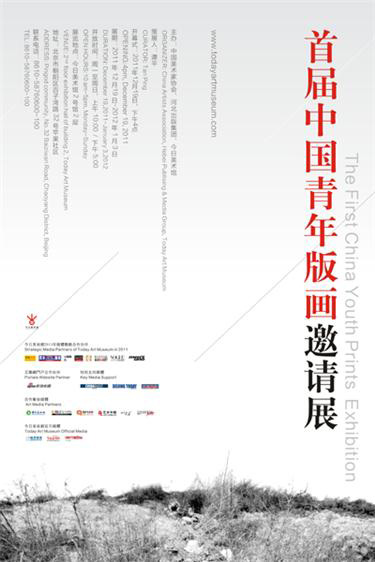
Poster of The First Chinese Youth Invitation Exhibition of Printmaking
Sponsors: Chinese Artists Association, Hebei Publishing Group, Today Art Museum
Curator: Tan Ping
Opening: December 19, 2011, 16:00
Dates: December 19, 2011--January 3, 2012
Opening Hours: Monday to Sunday, 10:00 am - 5:00 pm
Venue: Hall 2, Today Art Museum Level 2
Address: Chaoyang District, Beijing Baiziwan Road 32 Apple community
Tel: 8610 -58760600-100


